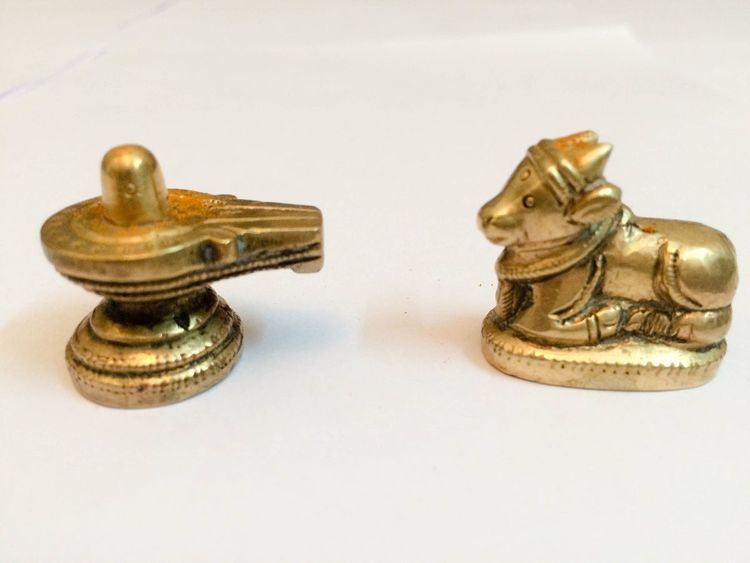 | ||
The Mahamrityumjaya Mantra or Mahamrityunjaya Mantra (Sanskrit: महामृत्युंजय मंत्र or महामृत्युञ्जय मन्त्र, mahāmṛtyuṃjaya mantra or mahāmṛtyuñjaya mantra, lit. "Great Death-conquering Mantra"), also known as the Tryambakam Mantra, is a verse of the Rigveda (RV 7.59.12). It starts with a prayer to the ancient deities in the 59th sukta, 1st Mantra, the deities being Indra, Varuna, and Mitra. The 12th and last Mantra in the same sukta is addressed to Tryambaka, "the three-eyed one", an epithet of Rudra, later identified with Shiva. The verse also recurs in the Yajurveda (TS 1.8.6.i; VS 3.60).
Contents
Mantra text
The Mahamrityunjaya Mantra reads:
In Devanagari script:त्र्यम्बकं यजामहे सुगन्धिं पुष्टिवर्धनम्उर्वारुकमिव बन्धनान्मृत्योर्मुक्षीय माऽमृतात्In IAST transliteration:tryambakaṃ yajāmahe sugandhiṃ puṣṭivardhanamurvārukamiva bandhanānmṛtyormukṣīya mā'mṛtātLiteral Meaning of the Maha Mrityunjaya Mantra
Word-by-word meaning of the Maha Mrityunjaya Mantra:-
Origin
Secret Mantra, and Rishi Markandeya was the only one in the world who knew this mantra. The Moon was once in trouble, cursed by King Daksha. Rishi Markandeya gave the Mahamritryunjaya Mantra to Sati, Daksha's daughter, for the Moon. According to another version this is the Bija mantra as revealed to Rishi Kahola that was given by Lord Shiva to sage Sukracharya, who taught it to Rishi Dadhichi, who gave it to King Kshuva, through whom it reached the Shiva Purana.
It is also called the Rudra mantra, referring to the furious aspect of Lord Shiva; the Tryambakam mantra, alluding to Shiva's three eyes; and it is sometimes known as the Mrita-Sanjivini mantra because it is a component of the "life-restoring" practice given to the primordial sage Sukracharya after he had completed an exhausting period of austerity. Its Devata is Rudra or Lord Shiva in his fiercest and most destructive roopa or aspect. In the Vedas it finds its place in three texts - a) the Rig veda VII.59.12, b) the Yajur Veda III.60, and c) the Atharva Veda XIV.1.17.
Significance
It is said to be beneficial for mental, emotional and physical health and to be a moksha mantra which bestows longevity and immortality.
According to some puranas, the Mahamrityunjaya Mantra has been used by many Rishis as well as Sati during the time when Chandra suffered from the curse of Prajapati Daksha. By reciting this mantra, the effect of the curse of Daksha, which could make him die, slowed, and Shiva then took Chandra and placed it upon his head.
This mantra is addressed to Lord Shiva for warding off untimely death. It is also chanted while smearing Vibhuti over various parts of the Body and utilised in Japa or Homa (havan) to get desired results. While its energy protects and guides the initiates a mantra re-links consciousness to its deeper and more abiding nature and repetition of the mantra constitutes Japa, the practice of which develops concentration that leads to a transformation of awareness. Whereas the Gayatri Mantra is meant for purification and spiritual guidance, the Mahamrityunjaya Mantra is meant for healing rejuvenation and nurturance.
The true meaning is as follows:
Tryambakam: The three eyed lord (Shiva) who sees what we can see but who also sees what we can not see. Hence 3 eyed.
Yajamahe: Yajanam is invocation; I invoke
Sugandhim Pushti Vardhanama: Increase my good vasanas (not of material aspects like gold, money,sex, anger, the 6 enemies etc.)
Urvarukam iva bandhanaan mrityor mukshiya ma mritaat: When I die my soul should leave the body as easily ( without attachment) as the cucumber falls from its plant.
